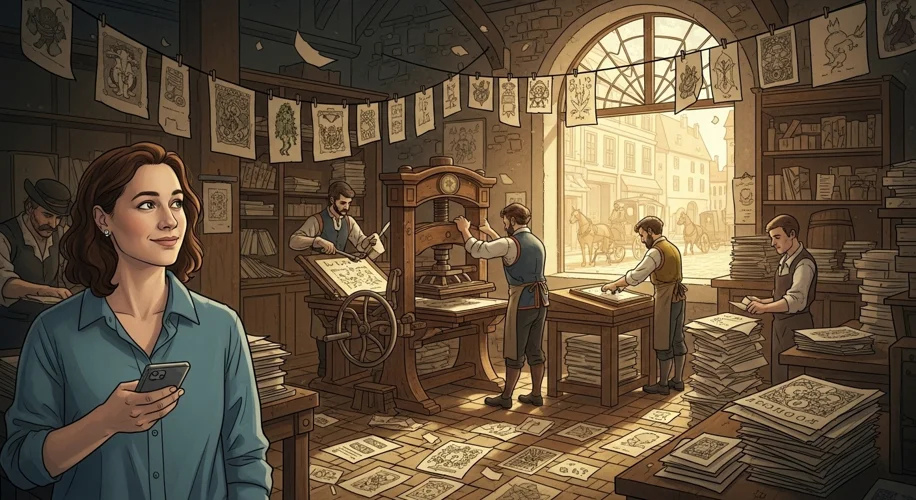You ever feel like the world is just a bit… loud these days? Like there’s so much information, so many opinions, so many things flying at you online, it’s hard to make sense of it all? Scrolling through social media, reading the news – it often feels like we’re living through something totally unprecedented. And honestly, it can be pretty exhausting.
But here’s a thought I had over my morning coffee that made me feel a little less alone, and a lot more optimistic. It’s about looking back to understand where we’re going.
The Original Information Overload
Imagine it’s the late 1400s. Before this point, books were incredibly rare. Scribes painstakingly copied every word by hand. Information was controlled, expensive, and mostly held by the powerful – kings, churches, wealthy scholars. Most people lived in a world where news traveled by word of mouth, and books were a luxury beyond imagination.
Then came Gutenberg’s printing press around 1440. And suddenly, boom. Everything changed. Books, pamphlets, manifestos – they could be mass-produced. What once took months or years could now be done in days. Information, for the first time, started to truly democratize.
Sounds great, right? More knowledge for everyone! But it wasn’t just smooth sailing. Imagine being alive then. Suddenly, there were thousands of pamphlets circulating. Not all of them were true. Many were full of wild claims, conspiracy theories, and inflammatory rhetoric. Religious texts were printed in local languages, leading to new interpretations and massive societal upheaval (hello, Reformation!). People who had never seen a book before were suddenly drowning in new ideas, many of them contradictory.
There was an explosion of information, and with it, a huge amount of confusion and distrust. People struggled to figure out what was real, who to believe. It challenged established authorities – the church, the monarchy – because suddenly, their control over information was broken.
Sound Familiar?
Now, fast forward to today. The internet. Social media. Anyone can publish anything, anytime. We’re bombarded by news feeds, viral videos, and opinions from every corner of the globe. Misinformation spreads like wildfire, echo chambers form, and it’s often incredibly difficult to tell fact from fiction.
It feels a lot like that 15th-century moment, doesn’t it? We’re experiencing the modern equivalent of the printing press revolution. The sheer volume of information, the challenge to traditional media, the struggle to find truth in a sea of noise.
Where We Go From Here
Here’s the hopeful part: Society didn’t collapse after the printing press. Instead, over time, new norms and institutions emerged. Libraries became public. Schools taught critical thinking and literacy. New forms of journalism developed. People slowly learned how to navigate this new information landscape. It wasn’t instant, and it wasn’t easy, but they adapted.
And I believe we’re in a similar transition right now. We’re in the messy middle, grappling with the profound impact of global, instant communication. We’re still figuring out the rules. But just as people learned to discern credible sources from sensationalist pamphlets, we will learn to navigate the digital world.
So, what does that mean for us? It means a continued focus on digital literacy. It means new tools for fact-checking and verifying information will become even more crucial. It means evolving social norms around online behavior and the spread of information. And it means that while the journey is bumpy, we’ve faced this kind of information revolution before, and we’ve always found a way through.
History doesn’t repeat itself exactly, but it definitely rhymes. And knowing that, well, it makes the present a little less overwhelming, and the future a little brighter.

